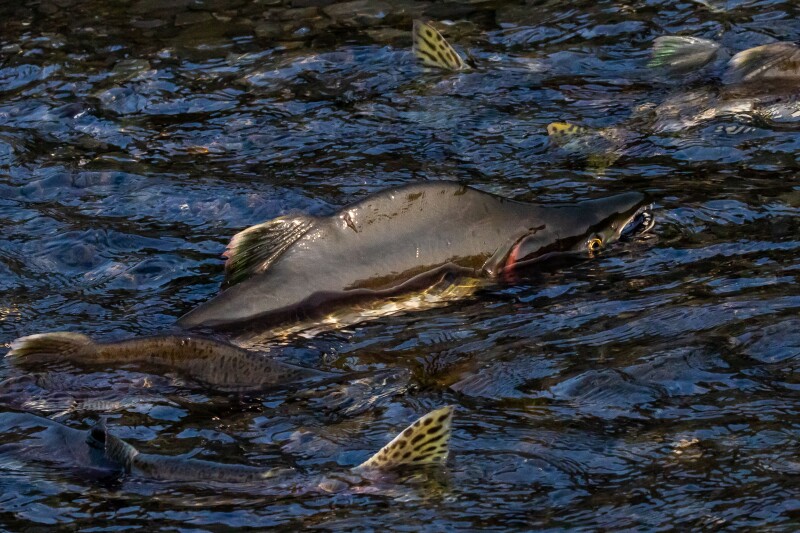The commercial salmon catch in Prince William Sound (PWS) has increased to 8.7 million fish overall. Cordova biologists compiled the most recent harvest data from the Alaska Department of Fish and Game (ADF&G), showing increased harvest. At the same time, the statewide deliveries to processors climbed to 64.5 million salmon.
The PWS management area includes all coastal waters and inland drainages entering the Gulf of Alaska between Cape Suckling and Cape Fairfield. The complex coastline in the area supports an array of marine life and is rich in salmon and herring. The salmon fishery has expanded since the mid-1970s due to the hatcheries that produce salmon, and the fishery continues to be a huge economic driver for PWS.
Data has shown an increased harvest, bringing the total number of chums caught to 1.149 million fish, 4.8 million pinks, and 2,974 coho. According to The Cordova Times, the sockeye catch slightly rose to 2.8 million and chinooks to 9,322 fish.
Sam Friedman of the McKinley Research Group shared, “Alaska salmon harvests continue to track well behind last year for all species, but especially pinks, compared to 2022, coho and keta.” The research group produces in-season updates of the state’s commercial salmon fishery for the Alaska Seafood Marketing Institute (ASMI).
According to trade sources, salmon fishing has also been slow across the Bering Sea in Russia. This represents a significant drop from 2023, the country's second-largest salmon harvest on record.
Friedman told The Cordova Times, “Alaska’s pink salmon harvest is down 63% from 2022, including a 73% drop from Prince William Sound, a key region for harvesting humpies (pink salmon).” The ADF&G has attributed the low pink harvest in PWS to smaller salmon runs and fewer boats participating in that fishery.
The ADF&G Blue Sheet showed that the preliminary catch, at 64.5 million fish, includes 39.9 million sockeye, more than 11 million chum, 312,000 coho, more than 13 million pink, and 207,000 chinooks.
Last November, entering the 2024 off-year, predictions were shared that the pink salmon fishery would have an average-sized harvest. ADF&G acknowledged it has had difficulty with its odd-year forecasts. It said pink salmon runs were generally larger than expected throughout the species range, from Washington through the Gulf of Alaska and to Russia, which harvested 478,000 metric tons of pink salmon in its summer season.
The year’s commercial salmon harvest forecast was for 69 million pink salmon, 39.5 million sockeye salmon, 24.3 million chum salmon, and 2.6 million coho salmon, making the forecast and overall commercial harvest of about 135.7 million salmon.
According to research data:
The state’s central district, which includes Cook Inlet, Bristol Bay, and Prince William Sound, has an overall harvest of 44.7 million fish to date, including 36.2 million sockeye, 6.7 million pink, 1.7 million chum, 25,000 coho, and 8,000 kings.
Southeast Alaska’s catch has reached more than 13 million fish, including 8.1 million chum, 4.4 million pink, 421,000 red, 188,000 king, and 174,000 coho salmon, and the Westward Region has delivered 6.3 million fish to processors. That total includes 3.2 million sockeyes, 1.9 million pink, 1 million chum, 102,000 coho, and 11,000 kings.
The Arctic, Yukon, and Kuskokwim Region harvested 7,000 salmon in Norton Sound, including 4,000 chum and 3,000 pinks. In the Kotzebue area, fishermen brought in 4,000 chum. The total regional harvest stood at 11,000 fish.







